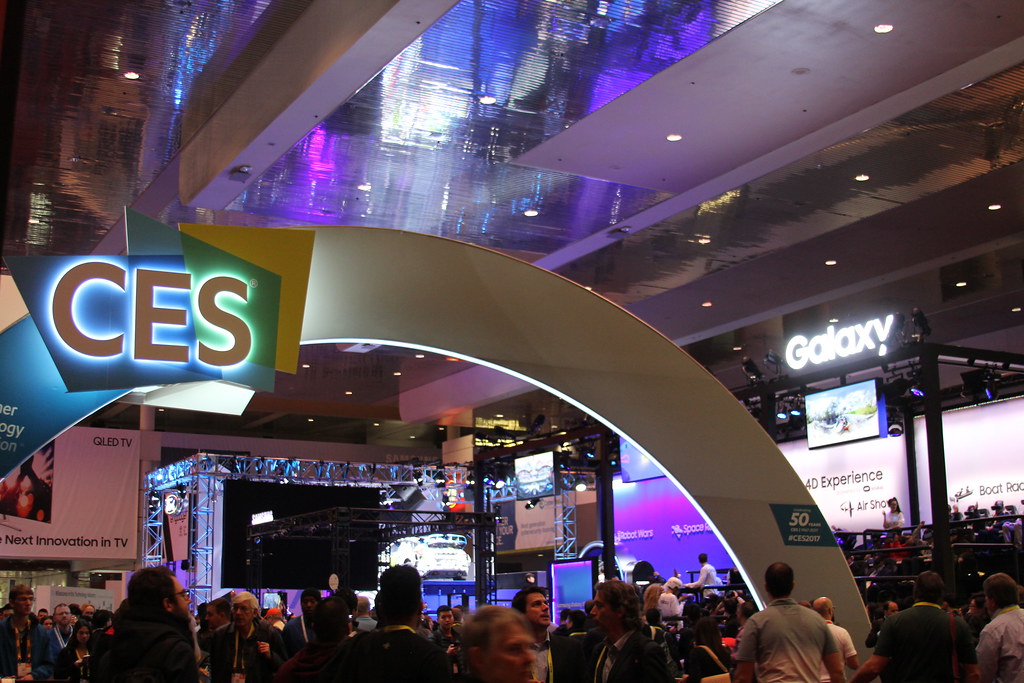
The United States hosts some of the largest and most influential trade shows in the world. For international companies, exhibiting in the U.S. is an opportunity to reach buyers, distributors, and partners across multiple industries. At the same time, U.S. shows have unique rules, higher costs, and service-driven logistics that differ from Europe, Asia, or Latin America.
This guide explains everything international exhibitors need to know: from costs and labor rules to cultural expectations and marketing best practices.
What Does Exhibiting in the U.S. Involve?
Exhibiting in the United States means working within a contractor-driven system. Union crews handle most installation and dismantle (I&D), drayage contractors move all freight, and service providers control everything from electricity to internet. Shows are shorter, often just two to three days, so exhibitors must deliver impact quickly.
Key Differences Between U.S. and International Shows
International exhibitors often find these contrasts most surprising:
- Union labor: In most major venues, only union crews can handle setup, teardown, and even basic tasks like plugging in equipment.
- Shorter show duration: While European shows may run a full week, U.S. shows typically last two to three days.
- Mandatory service providers: Electricity, internet, cleaning, rigging, and drayage must be purchased from approved contractors.
- Higher costs: Line-item fees (drayage, overtime labor, electrical drops) quickly inflate budgets.
- Visitor behavior: American attendees move fast; therefore, expect short pitches, and make decisions quickly.
Understanding U.S. Trade Show Costs
Costs vary by venue and industry, but several categories consistently drive budgets. Here are the typical ranges:
- To begin with, booth space often costs $25–$60 per sq. ft. For example, a 10×10 inline booth may run $2,500–$6,000, while a 20×20 island booth can cost $10,000–$24,000.
- In addition, drayage runs $90–$150 per CWT (per 100 lbs). A 3,000 lb exhibit could add $3,000–$4,500.
- Labor is another factor: Union crews typically charge $100–$150 per hour, often with four-hour minimums. Moreover, overtime during evenings or weekends can double the rate.
- On top of that, electricity and services cost $150–$250 per outlet, and rigging, internet, and cleaning all carry separate fees.
- Finally, freight forwarding for international shipments introduces customs, taxes, and longer transit times.
Tip: To stay on budget, always build a 20–30% buffer into your U.S. exhibiting plan to cover hidden or unexpected charges.
Union Labor Rules
Exhibiting in the United States requires understanding local labor rules. Union jurisdictions differ by city and venue. Below you’ll find a Quick View checklist and a Detailed View table with sources.
Quick View (At-a-Glance)
Use this table for a fast scan of what exhibitors can typically do themselves:
| City / Venue | Hand-Carry Small Items | Use Tools / Ladders | Plug in Equipment | Full Booth Setup |
|---|---|---|---|---|
| Chicago (McCormick Place) | ✔ Allowed | ✘ Union only | ✘ Electrician required | ✘ Union only |
| New York (Javits Center) | ✔ Allowed | ✘ Union only | ✘ Electrician required | ✘ Union only |
| San Francisco (Moscone) | ✔ Allowed | ✘ Union only | ✘ Electrician required | ✘ Union only |
| Las Vegas (LVCC, Mandalay Bay, Caesars) | ✔ Allowed | ✘ Union only | ✘ Electrician required | ✘ Union only (except very small booths) |
| Boston (BCEC) | ✔ Allowed | ✘ Union only | ✘ Electrician required | ✘ Union only |
| Los Angeles (LACC) | ✔ Allowed | ✘ Union only | ✘ Electrician required | ✘ Union only |
| San Diego (SDCC) | ✔ Allowed | ✘ Union only | ✘ Electrician required | ✘ Union only |
| Orlando (OCCC) | ✔ Allowed | ✔ Limited exhibitor rights | ✔ Some flexibility | ✔ More exhibitor flexibility |
| Dallas & Phoenix | ✔ Allowed | ✔ Limited exhibitor rights | ✔ Some flexibility | ✔ More exhibitor flexibility |
Detailed View (With Sources)
This table provides a city-by-city breakdown with enforcement level, and restrictions.
| City / Venue | Enforcement Level | Key Rules & Restrictions | Source |
|---|---|---|---|
| Chicago (McCormick Place) | Strict | Union jurisdiction over I&D, electrical, rigging, and freight. Exhibitor self-setup very limited. | McCormick Place |
| New York (Javits Center) | Strict | Multiple unions manage freight, carpentry, and electrical. Exhibitors allowed small, quick setups only. | The Javits Center |
| San Francisco (Moscone Center) | Strict | Union control over drayage, AV, electrical, telecom, and booth construction. | Moscone Center |
| Los Angeles (LACC) | Strict | Unions oversee drayage, carpentry, freight, rigging, lighting, AV, and electrical. Exhibitors cannot perform these tasks. | LA Convention Center |
| San Diego (SDCC) | Strict | Exclusive union agreements. Tools, ladders, carts, and mechanical gear restricted. Only venue staff handle cleaning and some services. | Visit San Diego |
| Boston (MCEC) | Moderate | Union labor applies, but limited self-setup by full-time exhibitor staff is permitted. | Signature Boston |
| Las Vegas (LVCC, Mandalay Bay, Caesars) | Moderate | Teamsters handle freight. Carpenters/electricians required for builds, rigging, and power. Small tool-free self-setup allowed. | Las Vegas Convention Center |
| Orlando (OCCC) | Flexible (Right-to-Work) | Florida law allows more exhibitor self-setup. Some services (rigging, electrical) remain venue-controlled. | Orange County Convention Center |
| Dallas & Phoenix | Flexible (Right-to-Work) | Broader exhibitor rights to set up booths. Some union rules still apply depending on venue. | NCSL |
How to prepare:
- Request the labor rulebook from show management.
- Budget for union labor with overtime contingencies.
- Work with an exhibit house (like Absolute Exhibits) that includes I&D in their pricing to reduce risk.
Cultural and Business Etiquette Differences
Understanding cultural expectations can make your booth more effective.
- Pitches are short: For example, American attendees expect a quick, benefits-focused message. Long introductions are often skipped in favor of direct value.
- Hospitality is lighter: However, while coffee, water, or small snacks are common, alcohol service is rare outside hospitality suites.
- Dress code: In addition, professional attire is the standard. Uniforms or branded polos are also widely accepted for booth staff.
- Networking style: Finally, Americans are comfortable with direct conversation and often exchange business cards quickly.
Pavilion vs. Independent Booth
Many international exhibitors start within a pavilion sponsored by a government or industry group. Meanwhile, others invest in standalone booths for full control.
| Factor | Pavilion (Shared) | Independent Booth (Solo) |
|---|---|---|
| Cost | Shared, lower | Higher, full responsibility |
| Brand Control | Limited customization | Full creative control |
| Visibility | Group presence | Dependent on size/location |
| Services | Shared translators, reception | Must arrange individually |
Marketing for U.S. Shows
Pre-show promotion is critical for ROI. American attendees often plan schedules in advance and don’t stop randomly at booths.
Best practices:
- Email prospects using attendee lists if available.
- Leverage event hashtags on LinkedIn and X (Twitter).
- Book meetings in advance with distributors, buyers, and partners.
- Use giveaways sparingly—attendees value information and demos more than trinkets.
Checklist for International Exhibitors
Use this list to prepare for U.S. exhibiting success:
- Apply for visas and secure travel early.
- Reserve booth space and hotel rooms at least 12 months ahead.
- Budget for drayage, union labor, and overtime.
- Order services (electricity, internet, cleaning) before deadlines.
- Translate graphics into concise English.
- Train staff to deliver fast, benefit-driven pitches.
- Confirm customs paperwork if shipping freight.
- Schedule meetings before arrival.
Common Pitfalls to Avoid
Even experienced exhibitors make mistakes when entering the U.S. market. Watch out for these common pitfalls:
- Expecting to build your own booth without union crews. Rules in many venues make this impossible.
- Underestimating drayage charges. These costs can quickly become one of the largest line items.
- Printing graphics with too much text or technical jargon. Attendees prefer clear, concise messages.
- Ignoring service order deadlines. Late orders almost always result in higher fees.
- Finally, failing to train staff for U.S. communication styles. Direct, benefit-driven messaging works best.
Real-World Perspective
European exhibitors often find U.S. shows expensive and highly regulated. Absolute Exhibits has worked with international clients to simplify the process by bundling I&D labor, reviewing drayage bills, and managing service orders. Additionally, with local facilities in Las Vegas and Orlando and trusted partners across the U.S., we help companies avoid surprises and focus on meeting American buyers.
Frequently Asked Questions (FAQ)
Q: How are U.S. trade shows different from European ones?
They are shorter, more regulated, and rely heavily on union labor and service contractors. Costs are higher, but the market reach is larger.
Q: What is drayage, and why does it matter?
Drayage is the mandatory service of moving freight from the dock to your booth. Furthermore, It is charged by weight and can be a major expense.
Q: Can exhibitors set up their own booths?
In most U.S. venues, union rules prevent exhibitors from handling setup. Therefore, professional crews are required.
Q: How can I control costs?
Book early, budget for labor and drayage, and work with an exhibit house that includes I&D and paperwork in their pricing.
Related blogs:
The Complete Guide to Exhibiting Abroad (for U.S. Companies)



